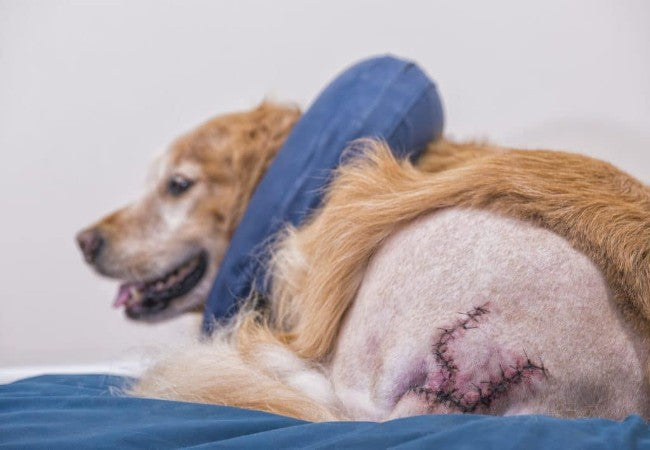Vet Approved Guide: How to Check Your Pet’s Stitches After Surgery – Healing Tips & Red Flags (2025)🏊♂️🐶

In this article
Vet Approved Guide: How to Check Your Pet’s Stitches After Surgery – Healing Tips & Red Flags (2025)🏊♂️🐶
By Dr. Duncan Houston BVSc
Surgery is a big event—for both pets and their humans. Whether your dog or cat was spayed, had a mass removed, or underwent orthopedic repair, checking their stitches at home is a key part of recovery. Done right, it helps prevent infection and ensures a smooth healing process. 🐶🐱
This guide walks you through how to safely check your pet’s incision after surgery, what normal healing looks like, and when to get help from Ask A Vet. 🩺
🔍 How Often Should You Check the Stitches?
- 🗓️ Check the incision 1–2 times daily for the first 10–14 days
- 🔦 Use a flashlight in low lighting to see clearly
- 🐾 Keep a log or take photos to track healing
🧵 What Healthy Healing Looks Like
- 🔘 Incision edges closed and slightly pink
- 🟠 Minimal swelling (a small bump may form under the skin)
- 🔬 A thin scab or clear fluid is normal in early healing
- 🐾 No odor, no active bleeding
Note: Surgical glue, sutures, or staples may look different—ask your vet or Ask A Vet for clarification. 📱
🚨 Signs of Infection or Complications
- 🔴 Redness spreading beyond the incision
- 💧 Yellow, green, or foul-smelling discharge
- 📈 Warm to the touch or firm swelling
- 🩸 Active bleeding, open gaps, or popped stitches
- 🥵 Fever, lethargy, or appetite loss
If you notice any of these, contact your vet—or use Ask A Vet immediately for triage. 🚨
📦 Tips for a Safe, Clean Recovery
1. 🛑 No Licking or Chewing
- 👕 Use a cone, surgical suit, or donut collar
2. 🧼 Keep the Area Clean and Dry
- 🛁 No bathing unless cleared by your vet
- 🧻 Wipe gently around the incision with a clean cloth if needed
3. 🚷 Restrict Activity
- 🚪 No jumping, running, or stairs for 10–14 days
4. 🩹 Don’t Apply Ointments Unless Instructed
- 💊 Some topicals interfere with healing or surgical glue
📅 What to Expect Day by Day
| Days Post-Surgery | What’s Normal | What’s Not |
|---|---|---|
| 1–2 | Mild swelling, slight pinkness, grogginess | Heavy bleeding, disorientation, vomiting |
| 3–5 | Crusting, light scabbing, decreased swelling | Discharge, licking, worsening redness |
| 6–10 | Edges healing, scab falling away, itching | Open wound, hot skin, odor, fever |
| 11–14 | Nearly healed, activity can resume (if vet approves) | Popped stitches, drainage, abnormal swelling |
📱 When to Contact Ask A Vet
- 📸 Unsure if an incision looks right
- 🩹 Stitches came loose or pet is licking obsessively
- 🧠 Your pet shows behavior changes after surgery
✅ Final Thoughts: Healing Takes Time—and Observation
Monitoring your pet’s stitches is an important way to support their healing and catch problems early. With consistent checks, a calm environment, and help from Ask A Vet. 🐾🧵
Quick Recap:
- 🔍 Check stitches daily for 10–14 days
- 🧼 Keep clean, dry, and protected
- 📱 Use Ask A Vet for any concerns
Need help today? Visit AskAVet.com. 🐶






